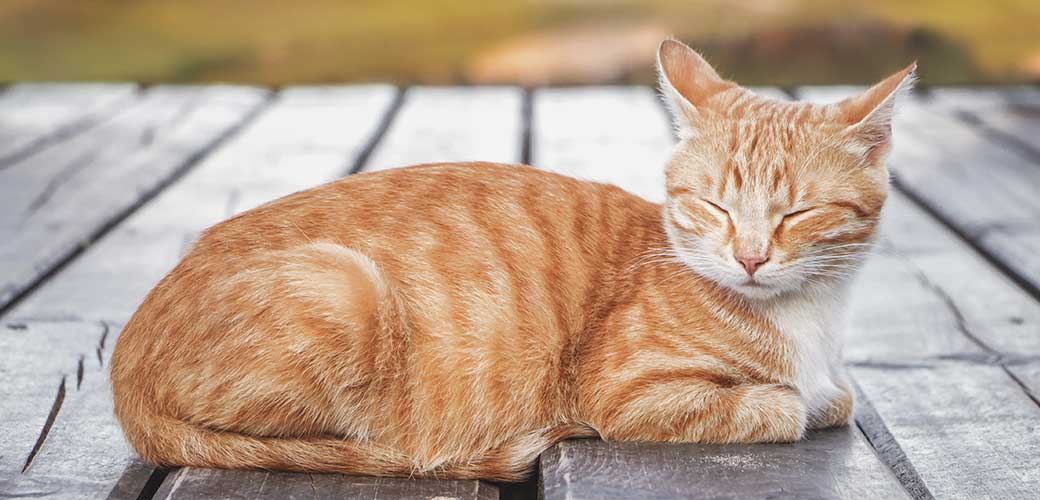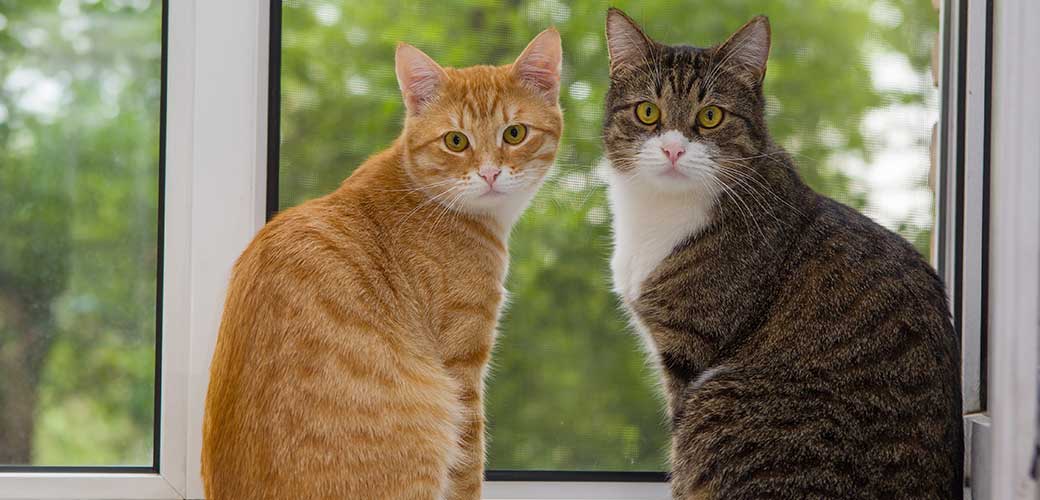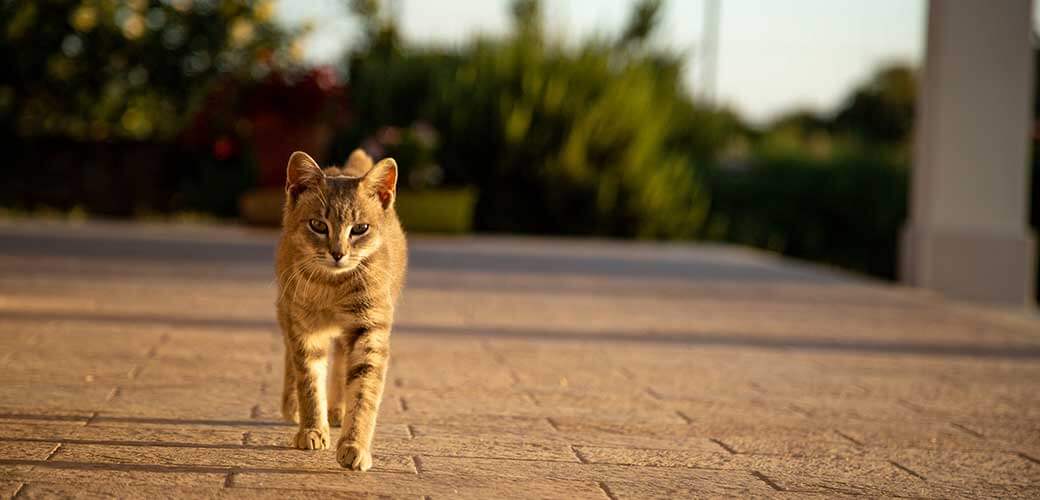Many people that clap their eyes on a tabby cat, with its spots, stripes, and swirls, will often assume that they are a breed all their own. However, we’re here to tell you that tabbies are not an individual breed, but rather cats that display certain physical characteristics in their fur. Tabby is a sometimes-dominant gene, not a breed at all.
For anyone interested in understanding more about how these gene has come to be so instantly recognizable in cats and the many minute features of a tabby cat, you’ve come to the right place. We’re going to be taking a closer look at the genetics, markings, and variations of tabby cats and what you should expect when you see one.
What is a Tabby Cat?

The term “tabby” is not in reference to a breed but rather to the look of a particular cat. The pattern of a tabby’s coat cat varies dramatically, with some being far more obvious than others. Additionally, a tabby’s coat can come in a huge variety of colors from classic orange, to blue, brown, black, or even the grey tabby cat.
Tabby cats are often cheaper than the more “aesthetically pleasing” purebred breeds. Interestingly enough, enough a purebred kitten can come out with the characteristic stripes or spots of a tabby because all cats carry the tabby gene – regardless of breed or bloodline.
The different types of Tabby cat patterns include spots, swirls, stripes, or even a mix of multiple patterns. Additionally, there is a small marking that every single Tabby cat has, regardless of gender or breed, and that’s a clear “M” shape in the pattern of the fur on their foreheads.
Where do Tabby Cats Come From?
There are certain ancestors of the modern domestic cat that is believed to have carried the genetic trait within their DNA. Some of the ancestors believed to carry this genetic train include the European Wildcat, African Wildcat, and Asiatic Wildcat. The African Wildcat in particular has close genetic ties to the Mackerel tabby, each sharing very similar classic tabby patterning.
The Tabby Gene
There is a dominant gene that has been passed down throughout feline genetic history known as the agouti gene. The agouti gene is what gives tabbies their interesting appearance, otherwise known as “agouti hairs”. Individual agouti hairs show bands of color throughout then, starting with a darker shade at the base, followed by several lighter shades working up the hair.
Believe it or not, this gene is carried by all cats, regardless of their breed or gender. However, this gene might not manifest in the coats of every cat. Interestingly, even black cats can have an underlying tabby pattern, though this is usually only evident in direct sunlight and by looking closely. A tabby black cat will usually have extremely dark brown marking mixed in with the black.
Even if a cat doesn’t appear to have tabby fur, it is still entirely possible for their kittens to come out with an unusual pattern, because, as previously mentioned, this gene is carried by every cat – whether or not they display the markings to prove it.
The Appearance of a Tabby Cat
The distinctive tabby markings are made up of solid dark base hairs. The remainder of the fur is then made up of the aforementioned agouti hairs. Because Agouti hairs are made up of multiple tomes and colors, it’s actually common for many tabby cats to have almost a salt and pepper-like appearance due to the various hair colors.
Coat Pattern, Color, and Markings
The most common look for a tabby, and perhaps the first thing you thought of upon hearing the word, is stripes. Clear, distinct stripes around the body and tail have become synonymous with the name. However, there are also spotted tabbies, as well as tabbies with clear swirls along their backs. We have listed below the different tabby looks, and their names, to help you better identify them in the future.
Classic Tabby Pattern
The Classic tabby (also known as a blotched tabby or tiger cat) has a thick, swirl-like pattern on its coat. Fun fact, American Shorthair cat breeds often have the same markings or similar markings to classic tabbies.
Spotted Tabby Pattern
Spotted tabbies have spots of various sizes and slightly varying shapes all over their bodies, as opposed to the classic stripes or swirls. It is thought that the spotted tabby could be a variation of the mackerel tabby, but this is currently just a theory without conclusive evidence to back it up.
Certain domestic cats like the American Bobtail and the Ocicat are often born with similar markings to the spotted tabby pattern. However, this doesn’t mean these markings are exclusive to those breeds.
Mackerel Tabby Pattern
Mackarel tabbies have solid or broken stripes over their entire bodies. A feature specific to mackerel is the stripe that runs down the length of its spine from head to tail. The stripes that go around the body seem to brand from the central spine stripe, giving them a fish skeleton-like appearance – hence the name.
Ticked Tabby Pattern
Ticked tabbies are the less obvious of the tabby cat range. Though they can still develop the stripes on their legs and tails, they generally don’t have many obvious markings across the rest of their bodies besides the classic “M” on the forehead. Ticked tabby cats (aka the agouti tabby) mostly have the salt-and-pepper appearance we mentioned earlier as they are predominantly covered with agouti hairs.
Patched Tabby Pattern
Though patched tabbies are often ignored when listing tabby types as they don’t necessarily have a specific coat pattern, we feel it’s worth noting them here anyway. Patched tabby cats have a combination of markings that can give them a patched appearance.
Other Physical Tabby Cat Attributes

We have listed the overall pattern of the many different tabby cat styles, but there are also several other distinct tabby patterns and markings that feature on most or all tabby cats:
- Narrow stripes decorating the face are seen on most tabby cats.
- Obvious bands wrapping around the tail and/or legs are seen on the majority of tabby cats.
- Dark pigmentation around the eyes gives them an eyeliner appearance, as well as additional pigmentations around the paws and lips.
- Paler patches of fur on the belly or chest that could just be paler or pure white.
- An “M”-shaped marking on the forehead (aka the Mau).
A Little More About the “M”
Cats were very well known for being favored by Egyptian pharaohs in Ancient Egypt. The M shape that can be seen on the foreheads of every tabby is historically believed to stand for Mau, which is the Egyptian word for cat.
Other theories speculate that it could stand for Muhammed, who owned an Abyssian tabby cat named Muezza and was famously fond of tabby cats in particular. There is even a theory based in Christianity that believes the M to be a blessing upon the tabby cat from the Virgin Mary as thanks to the tabby for keeping baby Jesus warm at night.
The Most Likely Cat Breeds to Become Tabbies
There are certain cat breeds that are thought to be more likely to pass down and manifest the tabby gene than others. You may be surprised at just how many breeds that is. We have listed the most common tabby breeds below:
- American Shorthair (Often seen as a classic tabby)
- British Shorthair
- Rex
- Siberian
- Turkish Angora
- Manx
- Ocicat
- American Bobtail
- American Curl
- Scottish Fold
- Oriental
- Persian
- Maine Coon
- Birman
- Egyptian Mau
- Ragdoll
The Orange Tabby Cat

Orange tabbies are alluring, and very much loved by tabby admirers. Interestingly orange is completely unique to tabby cats. You will never find a cat with a single shade of orange covering its entire body. For some reason, the Pheomelanin cells that cause red hair in cats seem to come hand-in-hand with the dominant tabby gene.
Additionally, orange is far more prevalent in male cats than females, in fact, most orange tabby cats are male. This is because male cats only need one copy of the x-chromosome, which carried the orange gene, whereas females need to receive two copies. This puts the average amount of male orange tabby cats at around 80%.
The Tabby Cat’s Personality
The tabby cat’s personality is difficult to define as it can depend on the cat breed in question. Mixed breed cats can be even more of a wild card. If you’re specifically wondering about the mackerel tabby cat personality or even that of any of the other tabbies listed in the article, it’s important to understand that the tabby gene is not something that has any control over the way your cat behaves.
Most cats have boisterous, bold, curious, and playful personalities, and it can be assumed that your kitty will do too. But if you’re wanting to better understand what to expect in terms of the nuances and details of your cat’s personality, we would advise researching the particular breed you will be adopting.
Tabby Cat Fun Facts
- The word ‘Tabby’ comes from the Arabic word ‘Attabi’ or ‘Attabiyah’. This was a neighborhood in Baghdad that was known for making silk that resembled the tabby’s coat.
- Tortoiseshell cats with tabby markings are also knowns as ‘torbies’.
- Tabbies have appeared on the silver screen numerous times. Famous tabby cats include Garfield, Shrek’s Puss in Boots, The Chesire Cat (Alice in Wonderland), Jones (Alien), and many more.
- Orange cats can also have black freckles. These are aptly nicknamed Marmalade cats.
- The Gayer-Anderson Cat statue from Ancient Egypt is a tabby cat with a clearly striped tail.
- The honorable Mayor Stubbs of Talkeetna, Alaska, was an orange tabby.
FAQs:
Q: How Big do Tabby Cats Get?
A: The size of the tabby completely depends on its breed. Maine Coons can grow to be really quite large, whereas the American bobtail can be adorably small. It’s best to research the breed of tabby you will be adopting to better understand the size it will grow to.
Q: What breed of cat is Tabby?
A: Tabby cats are not a particular breed of cat, but rather a coat pattern. Cats with striped, swirled, spotted, or mottled coats are usually tabbies.
Q: Are Tabby cats rare?
A: Far from it. Tabby cats are the most common type of cat seen today. They are sadly seen as undesirable to breeders of purebred cats and are usually sold at a significantly cheaper price than that of their siblings.

